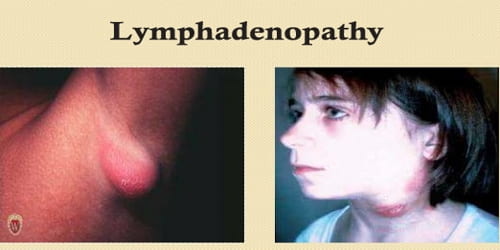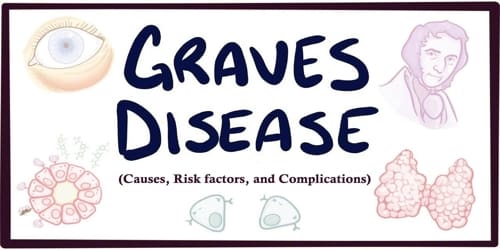Lymphadenopathy
Definition: Lymphadenopathy or adenopathy is a disease of the lymph nodes, in which they are abnormal in size, number, or consistency. Lymphadenopathy may occur in just one part of the body, in which case it is referred to as “localized” or it may be present in two or more body areas, in which case it is referred to as “generalized.” The condition most commonly affects nodes in the neck (cervical lymph nodes).
The term (Lymphadenopathy) comes from the word lymph and a combination of the Greek words αδένας, adenas (“gland”) and παθεία, patheia (“act of suffering” or “disease”).
Lymph nodes are small round structures that are present all over the body. They provide a house or enclosure for cells — most commonly white blood cells — that are involved in protecting the human body from infections.
Lymphadenopathy can occur for a number of reasons, including the following:
- Infections—the most common reason
- Lymphomas and leukemias—cancers of white blood cells
- Cancers at other sites that spread to lymph nodes
- Diseases of the immune system, such as lupus and sarcoidosis
- A long list of many other uncommon diseases.
Lymphadenopathy may be classified by:
Size, where lymphadenopathy in adults is often defined as a short axis of one or more lymph nodes is greater than 10mm.
By extent:
- Localized lymphadenopathy: due to the localized spot of infection e.g., an infected spot on the scalp will cause lymph nodes in the neck on that same side to swell up
- Generalized lymphadenopathy: due to a systemic infection of the body e.g., influenza or secondary syphilis
- Persistent generalized lymphadenopathy (PGL): persisting for a long time, possibly without an apparent cause
By localization:
- hilar lymphadenopathy.
- Mediastinal lymphadenopathy
- Bilateral hilar lymphadenopathy
- Dermatopathic lymphadenopathy: lymphadenopathy associated with skin disease.
By malignancy: Benign lymphadenopathy is distinguished from malignant causes which mainly refer to lymphomas or lymph node metastasis
Causes, Sign, and Symptoms of Lymphadenopathy: Infection is the most common cause of lymphadenopathy. The lymphatic system is a component of the immune system, which is designed to fight infection. As cells and fluid accumulate in the lymph nodes when infection is present and cause them to enlarge, the location of the lymph nodes can be used to help establish the cause of infection.
Other causes include autoimmune diseases (such as rheumatoid arthritis or lupus), cancer, and sarcoidosis. Lymphadenopathy as a result of cancer is uncommon, with one study showing that of more than 2500 patients who presented with lymphadenopathy, cancer was the cause in only 1%.

People may have no symptoms, or people may have any of the following:
- A painful, warm, or red lump under your skin
- More tired than usual
- Skin rash
- Unexplained weight loss
- Enlarged spleen (an organ that filters blood)
- Fever or night sweats

Diagnosis and Treatment of Lymphadenopathy: In cervical lymphadenopathy, it is routine to perform a throat examination including a mirror and/or endoscopy. People may need the following tests to help healthcare providers find the cause of your lymphadenopathy:
- Blood tests
- An x-ray, ultrasound, CT, or MRI
- A lymph node biopsy
Lymphadenopathy is often harmless and resolves independently, without the need for treatment. If treatment is used, it is targeted at the cause of the lymphadenopathy, rather than the adenopathy itself. The treatment of lymphadenopathy depends on the reason for lymph node enlargement.
Information Source:
















